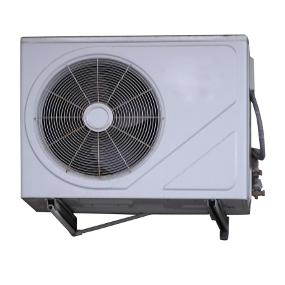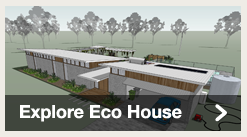Build it Back Greenbushfires
Air Conditioners
 Building a new home is a great
opportunity to be able to design your home so as that you can limit
the amount of energy you need to use on air conditioning.
Building a new home is a great
opportunity to be able to design your home so as that you can limit
the amount of energy you need to use on air conditioning.
By following solar passive design principles, installing insulation and by shading your home you can make your home more energy efficient and can then minimise the size of the air conditioner needed.
The most energy-efficient domestic air conditioners on the market today are evaporative air conditioners. They are ideally suited to the Victorian climate as the run efficiently in dry climates.
When purchasing an air conditioner check its star rating.
The Energy Rating scheme rates the energy efficiency of electrical products and appliances to help you with your purchasing choices.
The star ratings of all labelled products and appliances are also available on the energy rating website.
When comparing different appliances or equipment it is important to look at comparative energy consumption, which is shown in kilowatt-hours, rather than just the number of stars.
Solar airconditioners
Solar air conditioner models in development now mostly use evacuated solar thermal tubes, like the ones used in many solar hot water systems. Instead of drawing on mains power on the hottest days, pushing power grid peak loads into the red, these systems would just hum along on solar energy. And the hotter it is, the better they work. Consensus is that solar aircon for homes could be only a couple of years away. Currently there are several types of system in development.
One of the most promising systems uses evaporation. The system uses a desiccant to remove humidity from the air, which is then re-humidified using wet pads so the air delivered to the building is both cool and not too humid. The desiccant is then solar-heated to remove the moisture it has collected, so it's ready to work again. These systems are very far down the track in terms of technical development and will probably be among the first to be commercialised for domestic use. They're efficient, robust and easy to maintain. A slight downside with desiccant-evaporative systems, however, is that they use a fair amount of water: CSIRO has estimated 30-50 litres on a hot day for a residential system (that's about as much as a four-minute shower with a low-flow showerhead).
Though not as far along as evaporative systems, uses ejector jet pumps, which rely on heat energy to circulate a fluid through a cycle of condensation and evaporation. The principle has been known for around 100 years, and Dr Mike Dennis, who heads the Australian National University's (ANU) solar ejector jet program, believes it has the potential to be more reliable, cheaper and smaller than comparable systems. The ANU is working with commercial partners to develop a prototype.
Naturally, the new technology will sell for a premium at first. But as with all new technologies, the cost will reduce over time. Just as solar hot water is now economically viable for ordinary households, solar climate control will be as well.
- More Info
- > Australian National University
- > Energy Rating
- > resourceSmart
- > Your Home
- > FairAir
Listed suppliers are a guide and are not endorsed by Green Cross Australia or the Alternative Technology Association.




